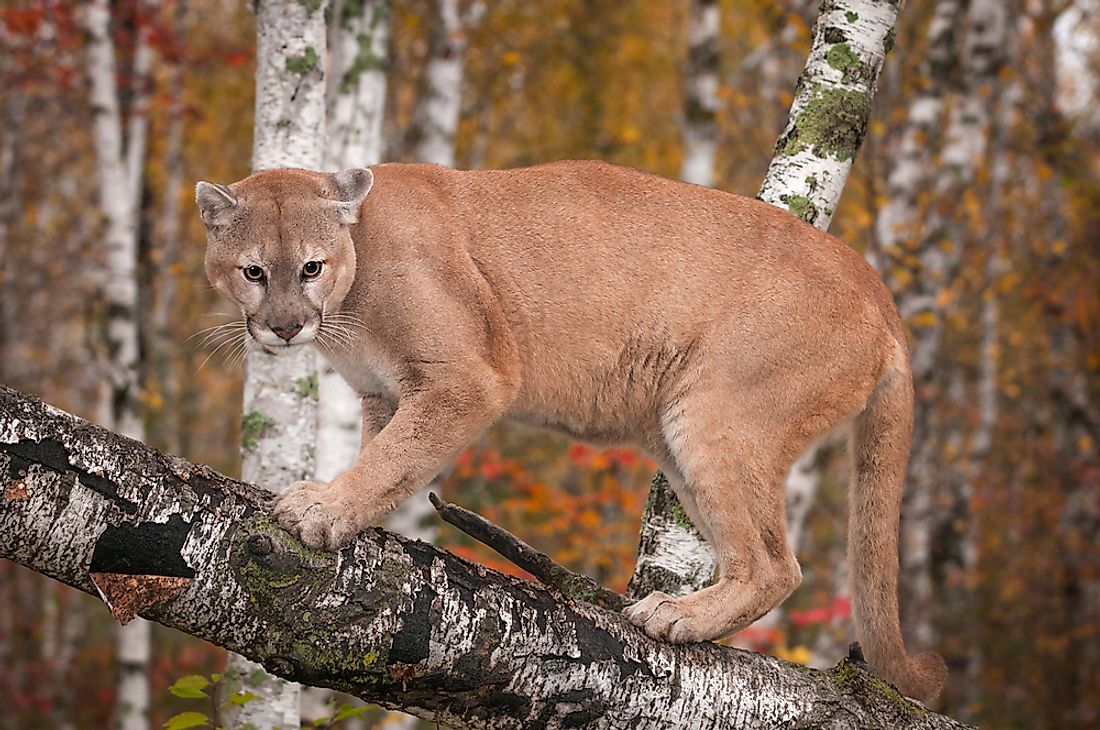Cat Facts - Animals of the World

Cats belong to the felidae family and are also known as felids or felines. Pantherinae is the subfamily of big cats while the Felinae subfamily includes medium to small wild cats and domestic cats. There are seven species of big cats, including the tiger, lion, jaguar, leopard, snow leopard, clouded leopard, and Sunda clouded leopard. The felinae subfamily, on the other hand, includes the cheetah, caracal, serval, lynx, and puma among others.
4. Physical Description
Felids have healthy bodies and limbs that help them in hunting. The various species of cats vary in shape and size, for example, the smallest cat alive is approximately 40 cm while tigers are the most abundant cats and go up to 300 cm in length. The tail of all the species is about a quarter its length. The body of all cats have fur, but the hair varies depending on the climate where the cat's habitat for example cats staying in deserts have less coat while those in the temperate region have a lot of hair. They have a soft pad on their toes to help them during hunting where the herbivore cannot hear them when moving. Cats have large eyes with a good night vision efficient in night hunting. The visible ears are large and very sensitive to capture sound made by nearby preys when moving. The felids also have a good sense of smell and can sense the scent of prey from a considerable distance.
3. Behavior
Cat behavior mainly involves the use of body language to communicate when hunting, seeking help from the family and the healthy posture they exhibit during relaxing. Felids just like any other animals produce different sounds during different times. They make noises like mew, hiss, and spat but on separate occasions. They provide they mew sound especially mothers when looking for their young ones. The hissing sound they produce when they need company from others during an attack while the spitting sound they deliver it when making threats to enemies. Domesticated cats are usually friendly and are gentle, unlike the wild cats which are wild and aggressive to human beings and other animals. The domesticated cats are smaller in size and do not fend on their own while feral cats are more abundant in shape and hunt on their own.
2. Habitat and Range
Most cats are found in wild forests in the tropical and the temperate zones. More than half the cat species live in forests and are excellent climbers.Pantherinae species are found through Central and South America, Africa, and parts of Asia. In contrast, Felinae species are found on every continent except Antarctica.
1. Diet
All cats are carnivores and have special adaptations that help them survive especially in the wild. They have healthy muscular bodies with flexible forelimbs and retractable claws for holding prey. They also have a dental arrangement suitable for biting into flesh and a spotted or striped coat good for camouflage. Cats have teeth that enable them to cut through prey during hunting and feeding. They have a small set of teeth due to their short muzzles that cannot accommodate larger teeth. They have scissor-like teeth that enable them to cut through flesh and bite.











